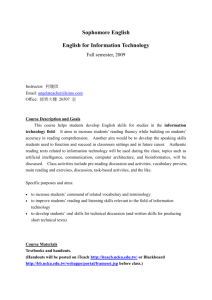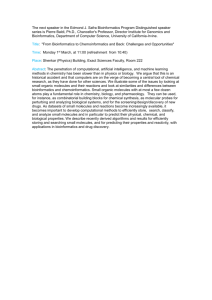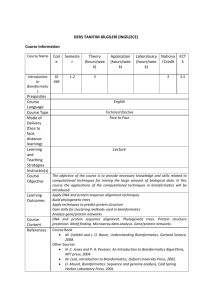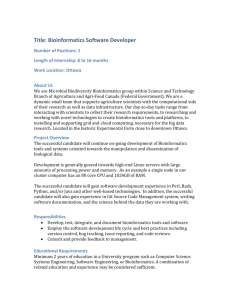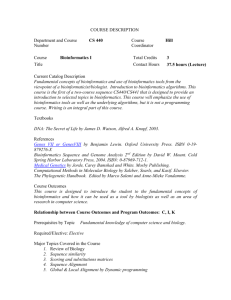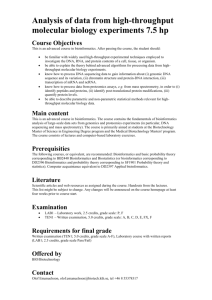Bioinformatics
advertisement
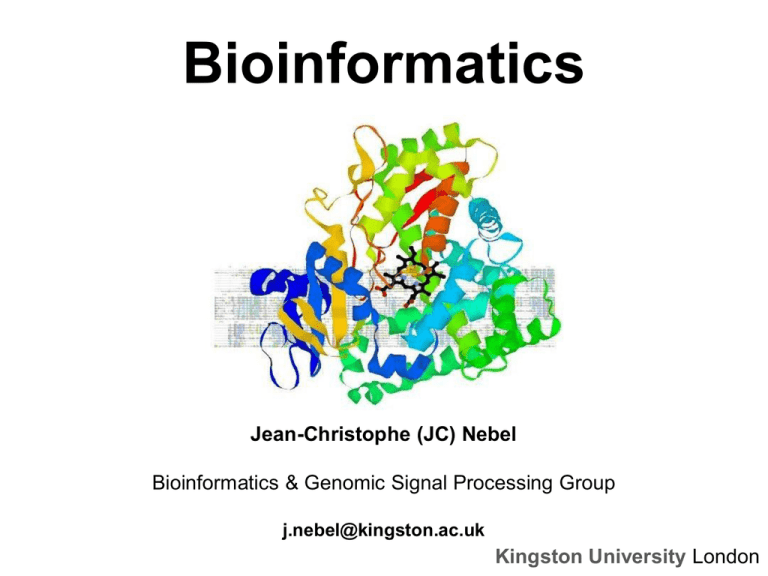
Bioinformatics Jean-Christophe (JC) Nebel Bioinformatics & Genomic Signal Processing Group j.nebel@kingston.ac.uk Kingston University London What is bioinformatics? Bioinformatics: word was coined in 1978 Bio-: life Informatics: information systems & computer science Analysis of molecular biology data using techniques from information systems, computer science, artificial intelligence, statistics and mathematics ~computational biology (USA) Molecular biology data? DNA, RNA, genes, proteins… Aim of bioinformatics “To improve the quality of life” by understanding how it works Health • disease prevention: • detect people at risk • change of lifestyle, diet… e.g. risk of cardiovascular diseases – exercise… • study virus evolution e.g. bird flu virus • treatment: • quantitative evaluation of disease spread • rational drug design e.g. first efficient drug against HIV (Norvir 1996) • gene therapy e.g. “bubble” kids with no immune system • animal model e.g. zebra fish is the new mouse Other applications Forensic (DNA fingerprints) • criminal suspects (UK: database of 3M people) • paternity tests 1/25 child is NOT from the expected father! • identification of victims (Titanic, earthquakes…) • prevent illegal trade (drugs, ivory…) Paleoanthropology & archaeology • Human evolution e.g. where is the first American from? Food industry • GMOs (Genetically Modified Organisms) Famine buster or Frankenfood? Bringing a new drug to the market [1] In silico In vitro In vivo 0. (Computational) ‘rational’ drug design 1. Biochemical assays ($400 per compound) Drug target in solution with compound 2. Cell-based assays ($4,000 per compound) Culture of living cells in solution with compound 3. Animal testing ($10,000-1,000,000 per compound) ~6 years, only 1/1000 compounds are tested in a clinical trial 4. Human clinical trials • Phase I: side effects on (20-50) healthy volunteers Human 30% of drugs are rejected (unsafe) Clinical • Phase II: positive effect on (20-300) patients Trials 66% of drugs are rejected (poor efficacy) • Phase III: positive effect on variety of (300–3,000) patients 75% of drugs are rejected ~8 years, fewer than 6% of compounds get approval $300 million to $1.7 billion and up to 20 years, only 1/10 projects succeeds [1] D Young, Computational drug design, N.J: John Wiley & Sons, 2009 Course structure 5 lectures (2x45’): 45’: 45’: Biological background and problem e.g.: what is DNA? + how to detect genes? Informatics solution (databases, algorithms…) -> handouts provided -> lecture notes available after lecture 5 workshops (1h30’): Use of bioinformatics tools


